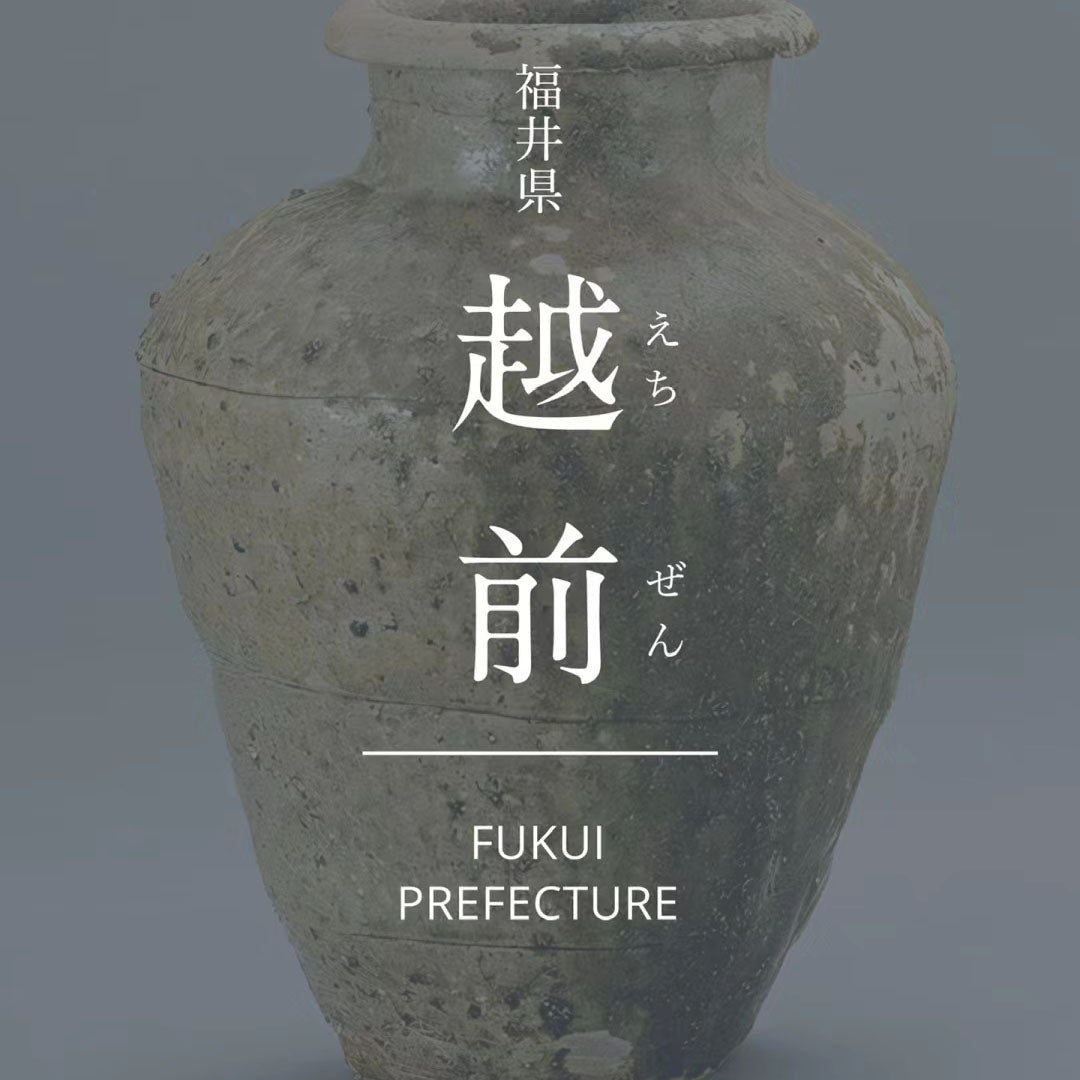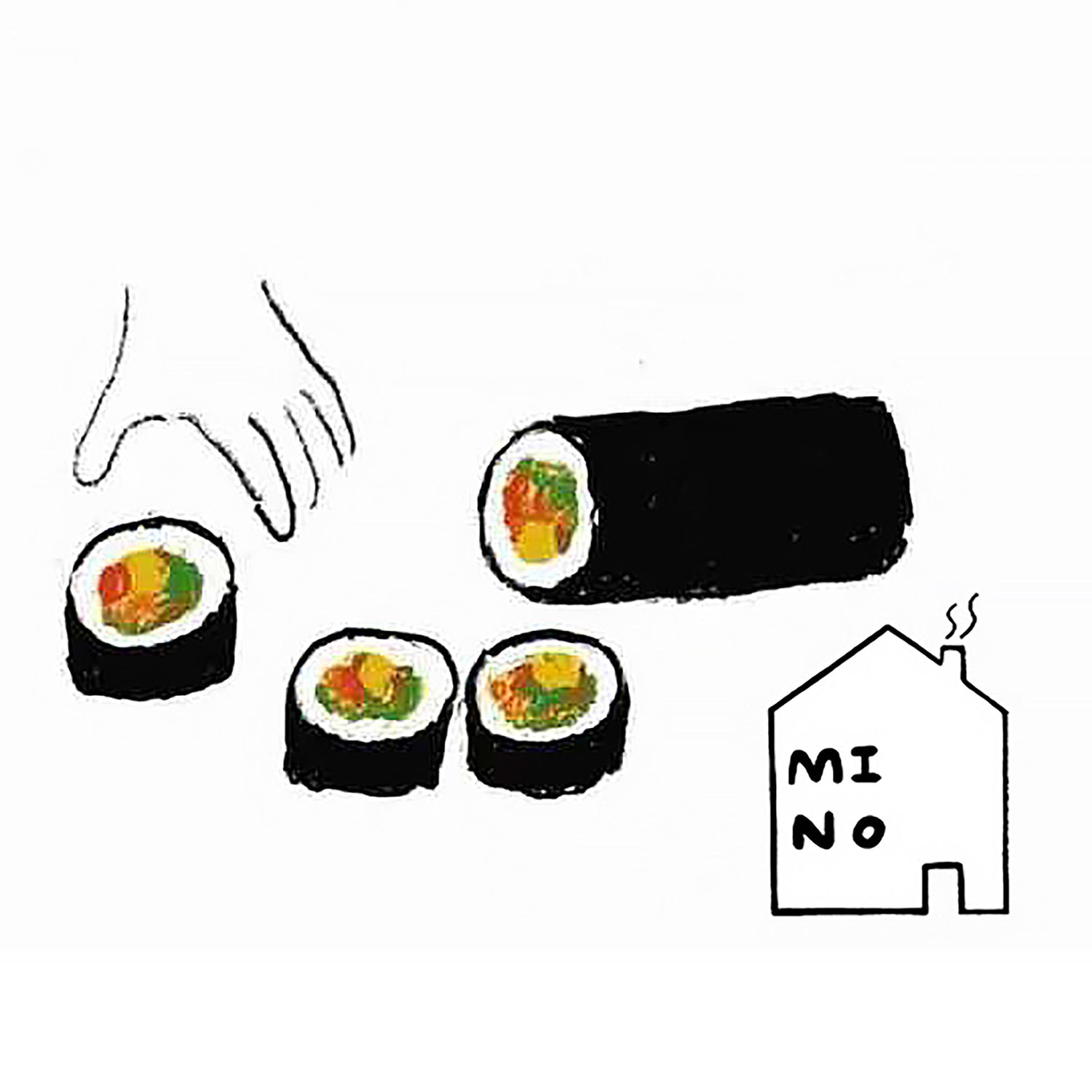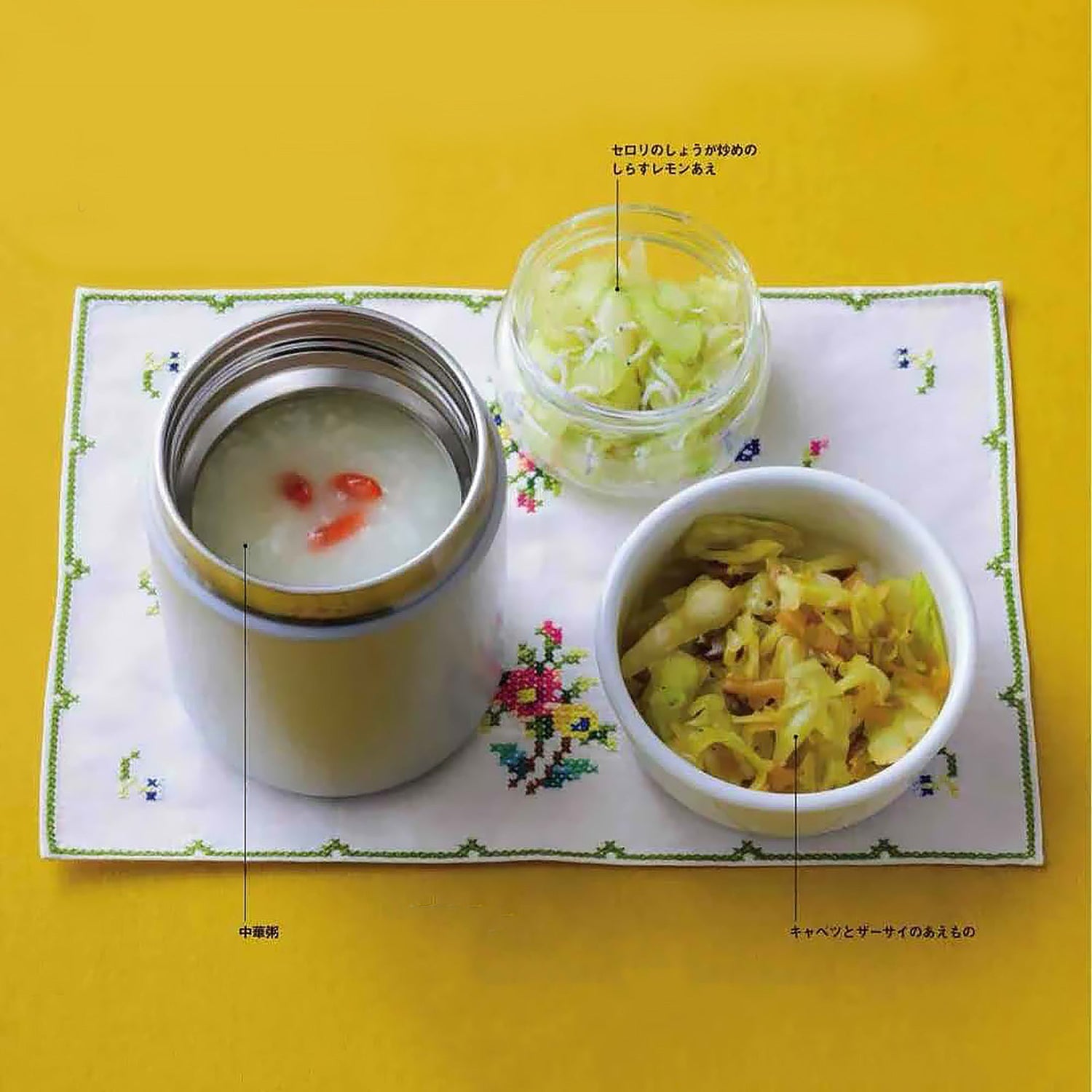
Echizen City, located at the western end of the Echizen region in Fukui Prefecture, faces the Sea of Japan. The ceramics produced in this area were once called Kumagai-yaki, Oda-yaki, and others. However, in 1947, a researcher of ancient ceramics, Kofuji, proposed the name "Echizen-yaki", and this name has been used ever since.

● Total population: 22,018 people (statistics as of January 2018, Heisei 30)
● Climate: Average temperature 15.5°C, annual precipitation 2,263 mm (2017, Heisei 29)
● Products: ceramic industry, Echizen daffodils, bamboo shoots, shiitake mushrooms, sweet peppers, cucumbers, rice, Echizen crabs, Echizen halibut, pickled products, tofu, marimbas, etc.
● Number of ceramic manufacturers: 39, employees: 54 (January 2018, Heisei 30) (peak prosperity period [January 1993]: 45 manufacturers, 65 employees)
● Echizen crabs and sea urchins have been flagship products since ancient times, and their delicacy is said to be the best in the country. Echizen Cape is famous as a landmark for the shipping routes of the Sea of Japan. Echizen-chō, full of hope, was chosen for its future development.

● Echizen City, Fukui Prefecture -- The largest ceramic center in Hokuriku
Echizen City is located in the northwest of Fukui Prefecture, near the Sea of Japan. It is surrounded by the Nyū Mountains, with an altitude of about 500 meters. Echizen ceramics began 1,300 years ago and became a production area 850 years ago. More than 200 kiln sites have been discovered, where everyday utensils were made. In the Middle Ages, thanks to the Kitamaebune ships, these products spread from Hokkaido to Shimane Prefecture, making Echizen the largest ceramic production center in the Hokuriku region. During the Meiji period, the introduction of running water and modern ceramics caused a decrease in demand, leading to its decline. However, it was rediscovered and revitalized thanks to Mizuno Kyūemon and Koyama Fujio. In 1948 it was designated as one of the six ancient kilns and in 1986 it was recognized as a traditional craft at the national level.

● Characteristics of ceramics
Echizen ware is distinguished by its rustic, solid, and warm appearance, with a unique charm from the clay and ash glazes, highlighting the aesthetics of folk art. Echizen clay is rich in iron, fire-resistant, and when fired, it becomes dense and compact, with a fine texture and strong adhesion, ideal for delicate sculpture. The clay also contains a high proportion of quartz and other vitreous components, which helps fill the spaces between the grains during firing, making the objects strong and compact. This type of clay is particularly suitable for making large jars and pots. During the Kamakura period, the technique of "making large Echizen jars with rope" was created, a method that is still passed down today.

● Reason for the millennial continuity -- The abundance of quality raw materials
The clay extracted from the ancient kiln sites around Kozohara in Echizen City was almost white and of very good quality. This clay had a refractoriness of between 1,510 and 1,550 degrees Celsius, was very tough, and was rich in silica, with a low aluminum oxide content. Later, from the Kamakura period onwards, clay from the hills west of Tenno-gawa became the main material. This clay was stronger and had an even higher refractoriness, ideal for making large ceramic jars. According to historical records, during the Edo period, clay was replaced by field soil, exploiting the fertile soils in the surrounding area, showing that ceramic materials evolved over time.

● Reason for the millennial continuity -- Focus on the production of specific forms
From the opening of the Echizen kiln in the late Heian period to the end of the Muromachi period, production focused mainly on pots, jars, and mortars, everyday objects called "zakkiki." Looking at Suzu ware, which flourished along the coast of the Sea of Japan before the 15th century, it is noted that it produced not only utilitarian objects, but also sutra tubes and funerary urns, thus meeting the diverse needs of the time. However, in the 16th century, the increasing demand for large jars highlighted the durability issues of Suzu ware, which gradually declined until its production ceased. In contrast, the Echizen kiln focused on producing specific shapes, thus creating higher quality products.

● Reason for the millennial continuity -- Possession of port cities with developed logistics
Echizen ceramic products were once transported by rivers and land routes to villages along the coast. They were then loaded onto small boats for transport to large ports such as Tsuruga and Mikuni, from where larger ships would take them to different regions along the Sea of Japan. Since ancient times, Tsuruga and Mikuni were known as representative port cities on the Sea of Japan, with Tsuruga playing a particularly important role as a point of entry for people, goods, technology, and ideas from China. Although the Kitamaebune ships of the Edo period are famous for these routes, the distribution and transportation system at Echizen ports was already established long before that. This suggests that the commercial expansion of Echizen ceramics was facilitated by these infrastructures.

● Nara Period -- The one of the major production centers of Sueki ceramics
During the Nara period, production of Sueki ware also began in the city of Echizen, although this production gradually ceased in the early Heian period (10th century). About 60 kiln sites have been identified, and Sueki ware produced at the Danjo group of sites was supplied throughout Echizen Province. Although there is no direct technical connection between Sueki ware and Echizen ware, understanding early craft production is essential. The Shinmei-Sagatani Sueki ware production site in Kozohara, Echizen City (designated a cultural property by Fukui Prefecture) is a 10th-century Sueki kiln site. After excavation, the kiln structures have been preserved and are open to visitors.

● Late Heian period --L The birth of Echizen ceramics
In the late 12th century, the Echizen kiln began to adopt the techniques of the Tokoname kilns. The first Echizen kilns began operating around Kozohara in Echizen City, producing ceramics very similar to those of Tokoname. During the medieval and modern periods, over 200 kiln sites have been discovered in Echizen, with the Oda and Miyazaki regions in Echizen City being major centers of production. Among these sites, the Nagasa No. 3 Kiln Site (designated a cultural property by Echizen City) is considered an important site for understanding the origins of Echizen ceramics in relation to the kilns of the Tōkai region.

● Edo period --L The birth of Echizen red tiles
In the mid-17th century, the production of red roof tiles began. By dissolving iron-containing clay in glazes, the tiles acquired a reddish and black color, known as "Echizen red roof tiles". The red roof tiles produced at Hiyoshi in Echizen City are identical to those discovered during excavations at Kanazawa Castle and Fukui Castle. The roof tile making technique spread to the Tōhoku region, and approximately 35,000 Echizen red roof tiles were laid on the roof of the Hakodate Shogunate Office in Hokkaido.

● Modern period -- The Revival of Echizen Ceramics
Competition between production regions led to a drastic reduction in the number of Echizen ceramic kilns. However, new kilns have been engaged in the search for new Echizen ceramics. They have attempted to use local materials to make porcelain, produce exquisitely painted ceramics, and have set up various initiatives such as training schools to pass on techniques. Yamane Iemon is one of the representatives of the Kozohara kilns. He has devoted himself to the production of "Shiro" (white porcelain) and is also one of the investors in the joint venture "Nihon Hōen", playing a central role in the technical field.

● Sengoku period --L The expansion of Echizen ceramics
With the establishment of cities during the Sengoku period, Echizen kilns began to aim for large-scale production. To accommodate this change, the size of the kilns was enlarged, the kiln walls and chimneys were reinforced, and various technical innovations were implemented. The production system was also completely revised, breaking away from the previous small-scale craft production. At that time, Echizen ceramic products were distributed along the coast of the Sea of Japan. The Takeno-tani kiln site cluster (designated a cultural property by the city of Echizen) is a kiln site dating from the late 16th century to the early 17th century, measuring up to 25 meters in length, illustrating the expansion of the scale of production.

● Modern period --The naming of Echizen ceramics
For a long time, the ceramics produced in Echizen did not have a unified name, being called "Kozohara-yaki", "Kumagai-yaki", "Koyama-yaki", "O-tsuki-yaki" and other names based on villages. To remedy this situation, the researcher of the ancient kiln sites Mizuno Kyūemon, the ceramics researcher Koyama Fujio and Kitano Shichizaemon of the Echizen kilns named these ceramics "Echizen-yaki". In 1965 (the year 40 of the Showa era), by unifying the ceramics produced in Fukui Prefecture under the name "Echizen-yaki", this name began to be widely recognized throughout the country.





